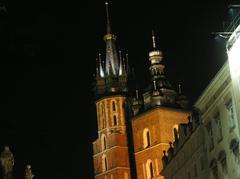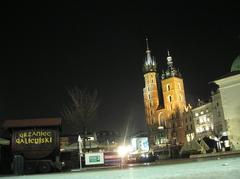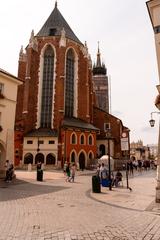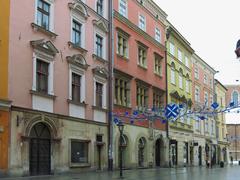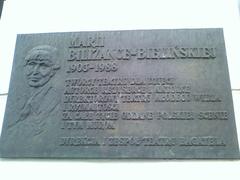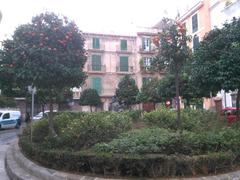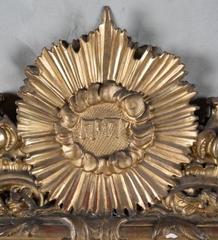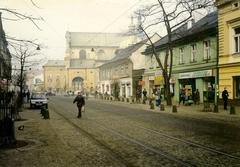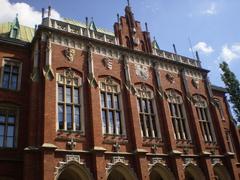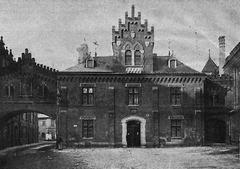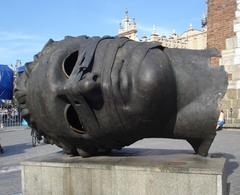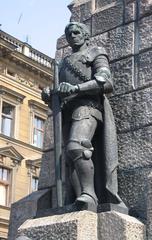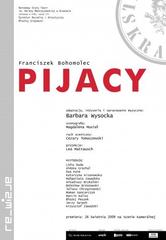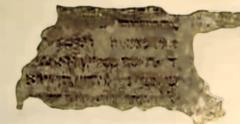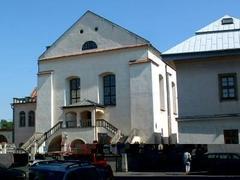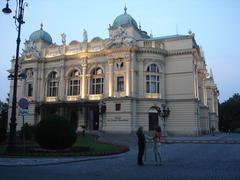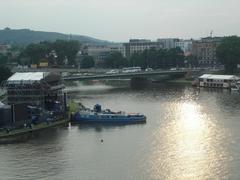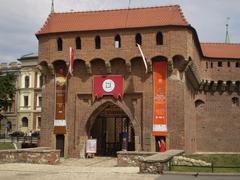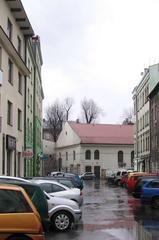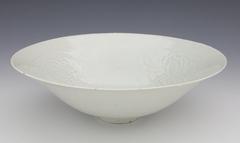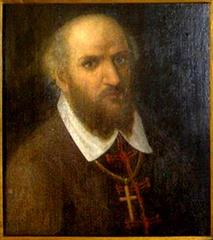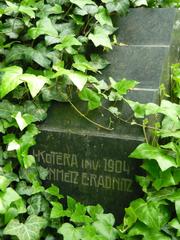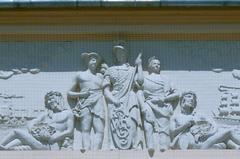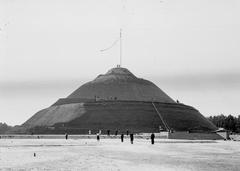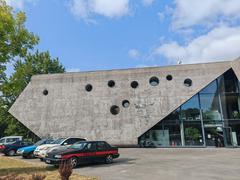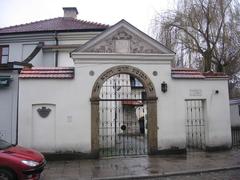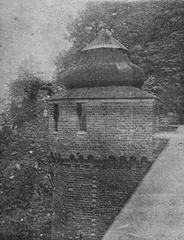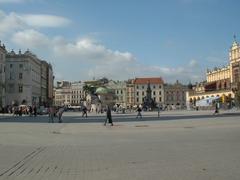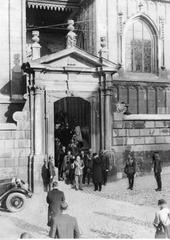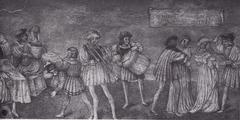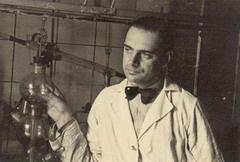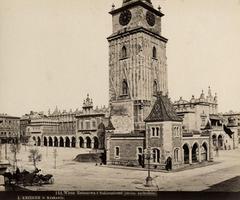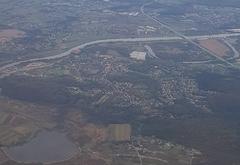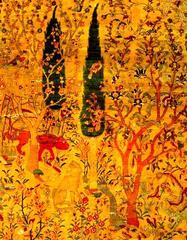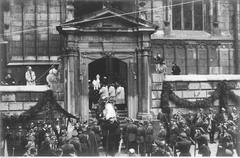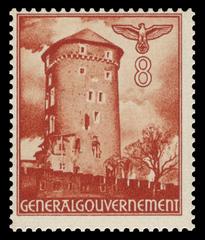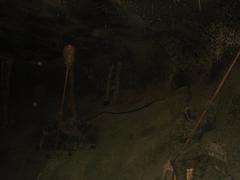
St. Mary’s Basilica in Kraków: Visitor Information, History, and Travel Tips
Date: 17/07/2024
Introduction
Table of Contents
- Introduction
- Early Beginnings and the First Churches
- The Rise of a Gothic Masterpiece - Construction of the Basilica
- A Beacon for the Faithful - St. Mary’s Through the Ages
- The Veit Stoss Altarpiece - A Carved Masterpiece
- The Hejnal Mariacki - A Trumpet Call Echoing History
- Architectural Evolution - From Gothic Grandeur to Baroque Flourishes
- A Symbol of Resilience - Surviving Wars and Partitions
- Visitor Information
- Nearby Attractions
- Special Events and Guided Tours
- Photographic Spots
- Conclusion
- FAQs
Early Beginnings and the First Churches
The site where St. Mary’s Basilica stands today has been a place of worship for centuries. While the exact origins of the first church on this site remain shrouded in the mists of time, it’s believed that a Romanesque church stood here as early as the 11th century. This early structure, likely built of wood, fell victim to the devastating Mongol invasions that ravaged Poland in the 13th century.
The Rise of a Gothic Masterpiece - Construction of the Basilica
From the ashes of destruction rose a new symbol of faith – the Gothic St. Mary’s Basilica we see today. Construction began in the late 13th century, funded by the generous patronage of Prince Bolesław V the Chaste and his wife, Kinga of Poland. The basilica’s design, a testament to the then-popular Gothic style, featured soaring arches, intricate rib vaulting, and the characteristic emphasis on verticality, drawing the eye heavenward.
A Beacon for the Faithful - St. Mary’s Through the Ages
Over the centuries, St. Mary’s Basilica became deeply intertwined with the lives of Kraków’s citizens. It witnessed royal coronations, served as a sanctuary during times of war and plague, and became a focal point for religious and civic life. The basilica’s importance extended beyond the spiritual realm, as it housed a school, a library, and even served as a meeting place for the city council.
The Veit Stoss Altarpiece - A Carved Masterpiece
No exploration of St. Mary’s Basilica is complete without mentioning its crown jewel – the magnificent high altar carved by the German sculptor Veit Stoss. Commissioned in 1477 and completed in 1489, this monumental work of art, standing at an impressive 13 meters tall and 11 meters wide, is considered one of the largest Gothic altarpieces in Europe. Carved from linden wood and vividly painted, it depicts scenes from the life of the Virgin Mary, captivating viewers with its intricate details and emotional depth.
The Hejnal Mariacki - A Trumpet Call Echoing History
Every hour, a haunting trumpet melody, known as the Hejnal Mariacki, rings out from the taller of St. Mary’s Basilica’s two towers. This tradition, dating back to the 14th century, served as a call to prayer and a warning signal for the city. Legend has it that a watchman stationed in the tower, while sounding the alarm to warn of an approaching Mongol invasion, was struck by an arrow in the throat, abruptly cutting short the melody. To this day, the Hejnal Mariacki is played incomplete, ending on a poignant, broken note, a somber reminder of the city’s past and the watchman’s sacrifice.
Architectural Evolution - From Gothic Grandeur to Baroque Flourishes
While the basilica’s core structure remains a stunning example of Gothic architecture, it has undergone several renovations and additions over the centuries. The 17th and 18th centuries saw the addition of Baroque elements, most notably the distinctive helmets that crown the basilica’s towers. These bulbous structures, added in 1683, replaced the original Gothic spires that were destroyed by a fire. The Baroque influence is also evident in the ornate side chapels added during this period, showcasing the evolving architectural tastes of the time.
A Symbol of Resilience - Surviving Wars and Partitions
St. Mary’s Basilica has endured its share of turbulent times. It withstood sieges, fires, and even the tumultuous period of Poland’s partitions, when the country was divided among neighboring powers. During World War II, while Kraków suffered under Nazi occupation, the basilica miraculously escaped major damage, standing as a symbol of hope and resilience for the Polish people.
Visitor Information
St. Mary’s Basilica Visiting Hours
St. Mary’s Basilica Tickets
Tickets can be purchased at the entrance or online. The cost is approximately 10 PLN for adults and 5 PLN for students and seniors. Special rates may apply for guided tours.
Travel Tips
- Best Time to Visit - Early mornings or late afternoons are ideal for avoiding crowds.
- Photography - Photography is allowed but be respectful of ongoing services.
- Accessibility - The main entrance is wheelchair accessible, but certain areas may be challenging to navigate.
Nearby Attractions
While in Kraków, don’t miss other historical sites like Wawel Castle, the Cloth Hall, and the Wieliczka Salt Mine. All are within a short distance from St. Mary’s Basilica.
Special Events and Guided Tours
Photographic Spots
For the best photos, capture the basilica from the Main Market Square during sunrise or sunset. The interior offers stunning shots of the Veit Stoss Altarpiece and the ornate ceilings.
Conclusion
Today, St. Mary’s Basilica stands as a UNESCO World Heritage Site, a testament to its historical, cultural, and architectural significance. It continues to be a place of active worship, drawing pilgrims and visitors from around the globe who come to admire its beauty, experience its spiritual atmosphere, and connect with the rich tapestry of history woven into its very stones.
FAQs
What are the visiting hours for St. Mary’s Basilica?
The basilica is open to visitors from 11:30 AM to 6:00 PM on weekdays, and from 2:00 PM to 6:00 PM on weekends.
How much are tickets for St. Mary’s Basilica?
Tickets are approximately 10 PLN for adults and 5 PLN for students and seniors.
Is St. Mary’s Basilica wheelchair accessible?
Yes, the main entrance is wheelchair accessible, but some areas may be challenging to navigate.
